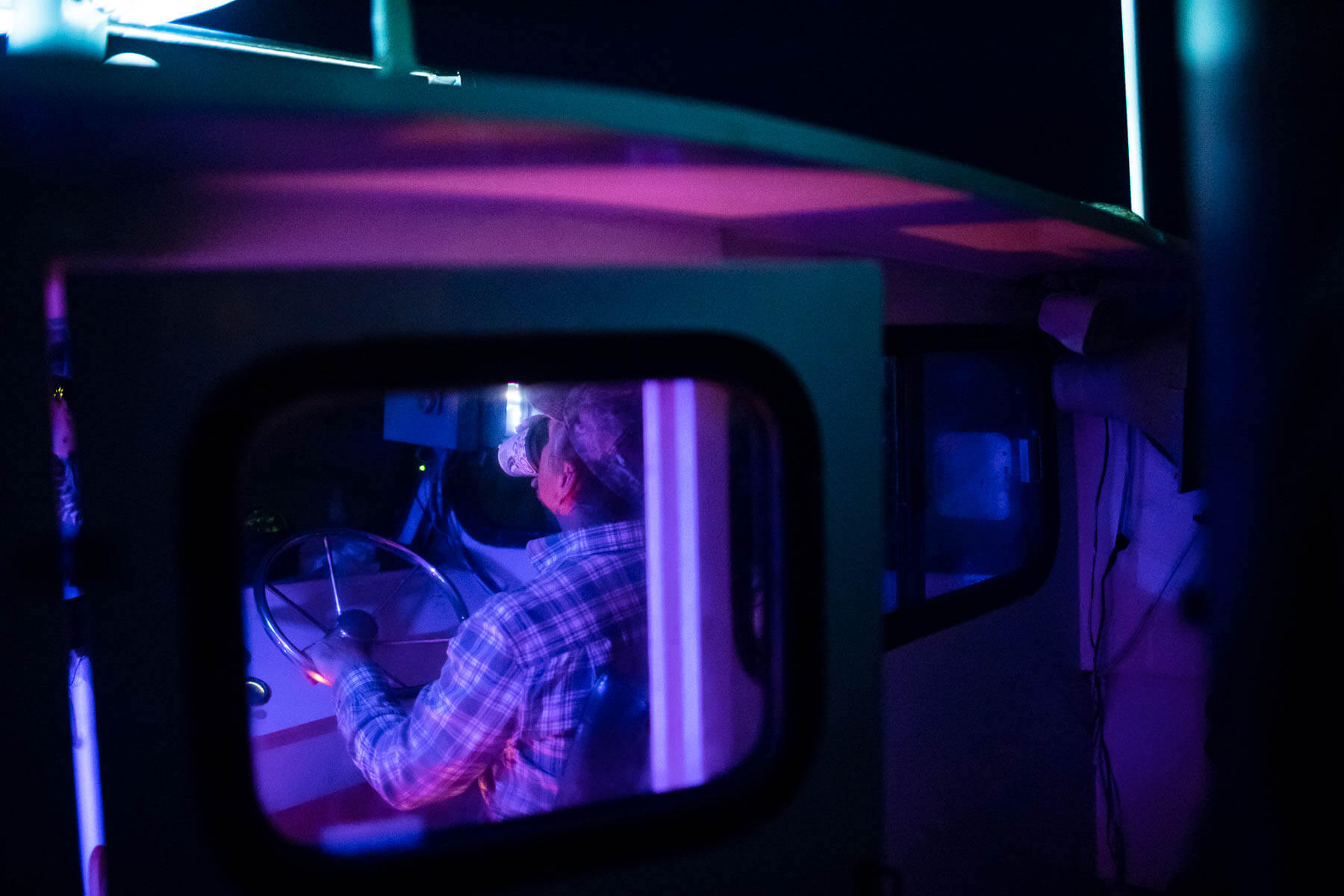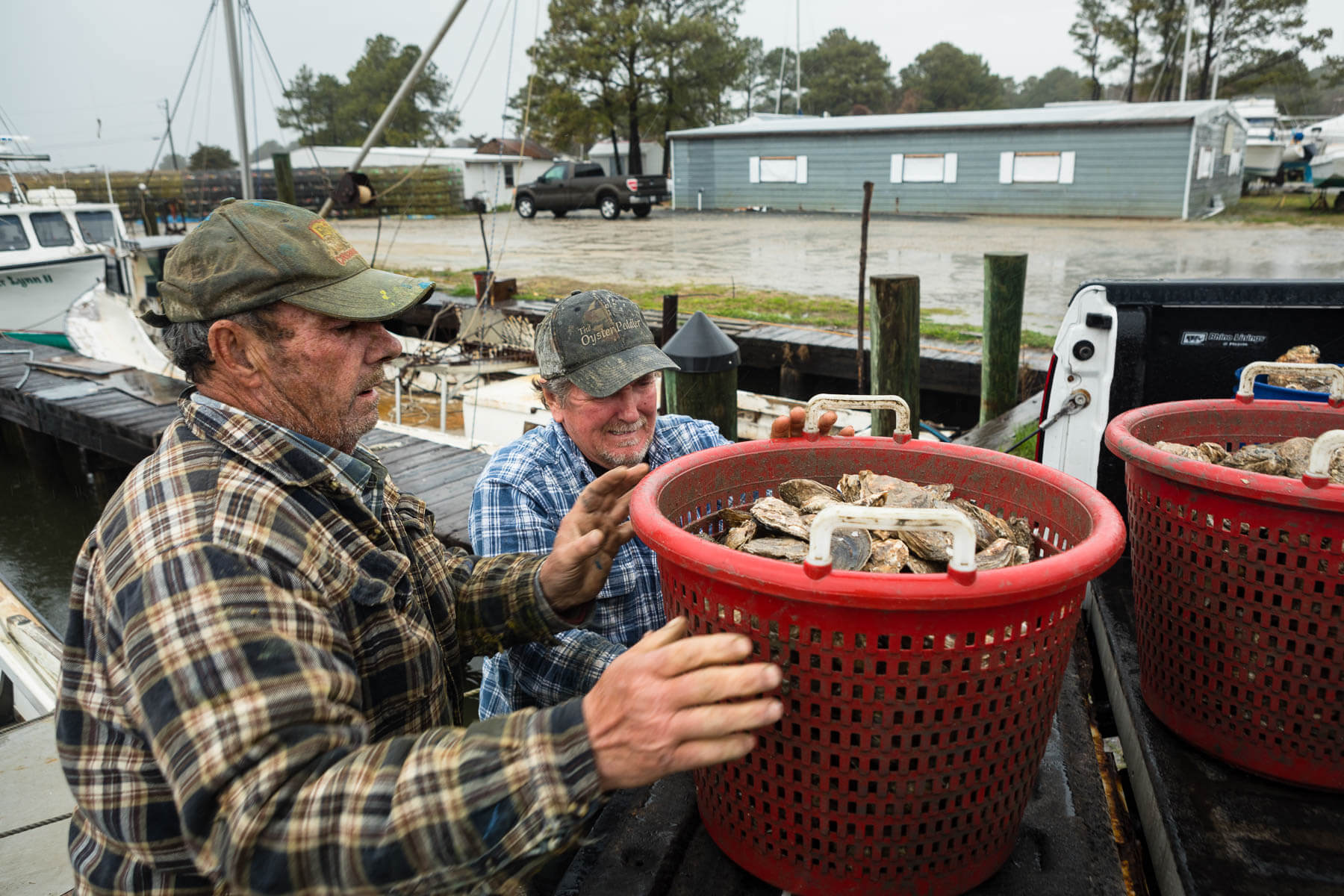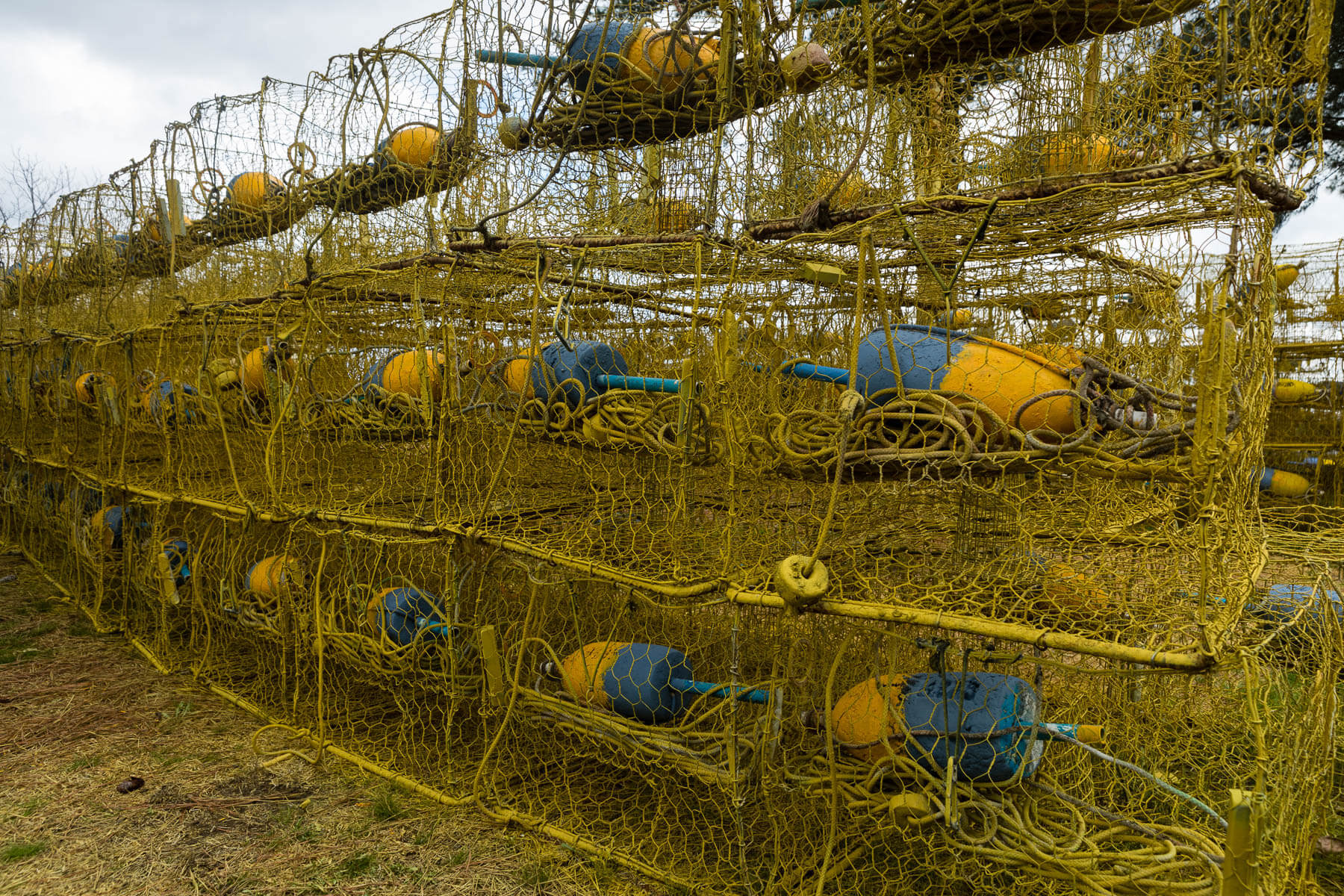Portrait of an Island Part III: What the water brings
Changing times impact the traditional waterman community of Deal Island
This is the final installment of our three-part series on Deal Island, Maryland. Read the first and second installments.
Between the eastern and western shores of the Chesapeake Bay, floating across the state divide of Maryland and Virginia, are the waters of Tangier Sound. Smith and Tangier islands—home to iconic cake and colonial shore accents—border the sound to the west. A speck of an island called Watts, its history hauntingly similar to the now-submerged Holland, constitutes the southern measure. To the north is Deal Island, the home of the skipjack. The shallow waters of the sound helped craft the classic oyster boat and build the unique watermen life of Deal Island. Before the sun rises each day it fills with working watermen, but the waters aren’t nearly as crowded as they used to be.
“I don’t know what’s gonna happen to the water businesses,” says waterman Jack Willing. It is a sentiment whispered across the Chesapeake, even as the current watermen rise to meet their workboats and the waves for another day. “Looks to me like it’s gonna be starvation time,” continues Willing. He is a longtime resident of Deal Island, a master craftsman boatbuilder and one of many generations of Willings to make a living by the water. He has been around long enough to see the changes come to the industry, the wildlife and the waterman way of life. “There’s not going to be any watermen. There’s nobody young who can afford to go into the water business.”

What it takes to be a waterman
“I’ve been oystering since I was fifteen years old,” states Butch Walters, one of the last watermen in the area. He speaks with a Deal Island accent, a warmly rolling mumbling of words with a simultaneous staccato cadence, unique to these small Chesapeake lands. “It gets in your blood, and you just don’t lose it. I mean you’re just stuck. You don’t want to do nothing else. I could be doing something else and I hear somebody say ‘oysters’ or ‘catching some crabs’ and I’m ready to go.”
The island’s culture is built on a deep connection to the water and an appreciation for the life it sustains. Walters’ son seems to have inherited a part of the waterman heart, but it isn’t enough. “He reminds me a lot of my father,” says Walters. His father worked the water until he went into the service, then changed fields after his return. “He has the light for [being a waterman], but he don’t have the light to do it for a living.”
Walters still holds out hope that his nephew may take to the water after he retires from his current profession—if the watermen trade is still around by then. “You can tell he has it,” Walters says, somewhat conspiratorially. “I see it in him. He has a love for it.” He is quiet for a moment, then adds, “His mother, which is my sister, I think she’d probably kill him if he became a waterman.”
Oysters seemed ever-present during the boom of the late 1800s, and the Chesapeake Bay became like a California gold rush on the water. Oysters were harvested in massive numbers, and their numerous shells were used for everything from decorations to driveways.
Overfishing and disease slashed the oyster population, and the numbers began to steeply drop over the following decades. Meanwhile, the land surrounding the Bay was filling with people, and now more than 18 million residents call the Bay’s 64,000-square-mile watershed home.
The Bay has struggled for decades, trying to sustain both the environment and a seafood industry despite failing health. In an effort to save oysters for the future, today’s waterman has to walk the line between scraping enough together to make a living and leaving enough to ensure that living will still be there tomorrow.
Harvest caps, high license fees and fishing regulations have helped to fix the overfishing problems of the past and better control the oysters lost to harvest, but these measures have also squeezed out many watermen. Necessary rigging equipment and required licenses put a steep financial burden in the path of hopeful watermen, and aren’t the only barriers. Watermen license waitlists are measured in years; on Deal Island and elsewhere in the sound, gaining a license usually means receiving it as an inheritance.
The pull on the heart that calls one to the water may continue to light within future generations, but Walters may be one of the last able to answer it. “My generation,” he says, “is the last big generation that’s still working the water.”

Rebuilding the reefs
Walters looks out over the waters as he talks, steering with a practiced hand and keeping one eye on his screen readouts. Technology has revolutionized some aspects of working the water, like the introduction of the power dredge, but Walters still uses a few of the old watermen tricks. Flocks of ducks tend to swoop down and feed on oyster beds, leading the watermen to a likely spot. If you know what you’re looking for, the wildlife and the water can be just as effective as a depth finder.
“I think [aquaculture is] going to be the future of the oysters, because there will be very few watermen left to do this job,” muses Walters. Aquaculture involves planting and farming oysters, and returned shells rebuild the reefs as harvests take place.
Oyster recovery programs, aquaculture and dedicated sanctuaries are helping oysters to rebound in the Chesapeake area. Most watermen are in favor of the sanctuaries and are even contracted short term by the Maryland Department of Natural Resources to help reseed oyster beds, but still they worry that their livelihood will not outlive the wait for trickle-down oysters from the sanctuaries. The replacement of shells is one of the main sticking points.
“Sanctuaries are a good thing, because we don’t get there to catch them,” explains Walters over the engine noise from his workboat. He is skating the waters around Deal Island in the pre-dawn on the last day of oyster season, and a worry frown creases his weathered face. “It causes oysters to spawn and puts more oysters in the water, but we’re not getting [shells and baby oysters] back to our lots where we need them.”
Oyster sanctuaries come up again in the little office of Scotts Cove Marina in the late morning, where a group of watermen sits discussing what will become of their way of life. “Sanctuaries should be on a rotating basis,” says one waterman, voicing a controversial opinion about effective sanctuary management. The watermen argue that if sanctuaries open to the commercial fishery for a few weeks every three to five years, older oysters—both larger are more disease-prone—can be harvested, allowing room for the young to grow and helping to clean sediment off all the oysters as they are dredged.
Watermen are seeing both sediment and disease take a toll on the oyster beds. The open wild harvest areas have been flattened out over the years, which makes the oysters incredibly vulnerable to sediment pollution.
According to Walters, dredging has revolutionized the way watermen work the oyster beds. The dredge allows them to push the oysters into a pile on the bottom and dredge on a slant along the edge. Sediment, which can suffocate Chesapeake oysters, is shaken off as the dredge comes up, and the little oysters are thrown back to rebuild the new pile.
National Oceanic and Atmospheric Administration scientists feel the sanctuaries are fine to stay closed for the same reason the watermen believe the dredge has been helpful for the wild beds: height. Reefs in the sanctuaries are more three-dimensional, so they are more resilient to sediment buildup than the wild-harvest beds.
The question remains whether the scientific and traditional expertise can come together to manage oysters for the future.
Jack Willing feels that those with an interest in oyster survival need to be more connected, with a broader view of the ecosystem involved in oyster survival. His solution: keep it local. Whether it’s shell or rocks, he wants it to be native Chesapeake. “They’re getting shells from down in Florida; ‘ancient shell’ is what they’re called. [Spat] won’t catch on them. That’s what they’re planting overboard on rocks—that are productive rocks!—and they ruined them.”
Rather than merely brushing shoulders when they come into contact in a day’s work, Willing would like to see true collaboration between officials and watermen on the science of growing oysters and the direction of the seafood industries. “If you can’t catch oysters, you lose all your market. If you don’t keep them cultivated, they die. It’s pretty simple. They can’t get up and move around like a crab can.”

Looking to the future
Crabs are a lively topic with Walters and fellow waterman Bruce Whitelock. Both men used to harvest hard-shelled crabs, but the season became too difficult to complete as they aged and the regulations tightened.
Hard crabbing requires setting crab pots, which on Deal Island are still maintained by hand. Pollution in the Bay hasn’t made life any easier. Unlike earlier days, when crab pots could be constructed and used readily, pots these days are coated in special paint to help them hold up in waters that eat away at the wires. Small zincs, sacrificial pieces of metal, are placed in each one. Zinc is quicker to give up its electrons than the pot itself, with the idea that the pot will stand up longer against corrosion.
“I remember when you never needed to use a zinc,” muses Whitelock, causing Walters to come back with an immediate, “you damn well better use them now.” Zinc prices have more than doubled since they’ve been needed in crab pots, further pushing the watermen out of hard crabbing.
The transition between seasons, the shorter hard crabbing season, the lack of help as the waterman trade declined and the maintenance demanded by his wooden boat have left Walters little time for hard crabbing. With the optimism and trust in cycles displayed by many watermen, Walters laid his hard crab pots up on the land to await better seasons. Years passed. Like the skipjacks lost to the marsh mud as they lay waiting for the oyster boom, Walters’ crab pots rusted and rotted away.
The Tangier Sound islands, made mostly of sand, are sifting and changing as the years pass. As Deal Island changes, the people who live there are working to save their lives in memories, stories and their new museum. The watermen are looking at how to use their considerable knowledge of the waters for the changes facing their industry. Watermen life is changing; Deal Island is changing; and everyone is looking to the future.

Comments
I just read your three part article and it made me cry. I have never been to Maryland but by was planning to for the Labor Day weekend this year. However, the quarantine may make it impossible. I’m the type of person who researches anything which truly interests me. The first reason I had to come to Deal Island was to attend the Skipjack Festival and meet for the first time, Dale Midkiff. I have been a fan of his since the 80’s. I began my research on places he would do comic cons at and this festival popped up. I saw where he had been raised in Chance, Maryland so that is where I began my exploration. Maryland was a complete mystery to me so I had to delve deep. My search led me to the discovery that Deal Island and Skipjacks And a rich history of sea captains and dredging for oysters. I looked for pictures which fired my imagination and made me daydream of seeing the church, the cemetery, the docks and to hear the voices of the Watermen early in the still dark early morning hours. Reaching out to the consumerism department I began planning to make the trip with my family. Somewhere along the way maybe through the captain who was nice enough to text me about the pictures I commented on; I fell in love with the skipjacks and their rise and fall to glory in history. Pictures of Houses and land returned to the bay broke my heart. Today I read your article about how The bay is reclaiming it’s land again and I truly feel the sadness of the residents. My home is a very small town too and it also is struggling to just keep what little it has as time marches on. The article you wrote touched my heart and I wanted you to know that I felt the love you poured into your writing. Maryland like my Virginia and the rest of the world waits with baited breath for things to return to normal. My deepest desire now is that I get to see the bay the way you portrayed it and the Skipjacks will have the sails unfurled and get to race.I hope and I get to meet the healthy residents of Deal Island on Labor Day weekend. Thanks for your wonderful piece on a important part of Maryland’s heritage. I pray this finds you well and safe. Sincerely, Mary Rhoton
Loved reading your 3 part series on Deal Island. I have wonderful memories of spending Easters and summer vacation there at my aunt and uncle's home across from the old bank on Deal Island Rd. which they owned at the time. This is a special community, I'm looking forward to returning to see my first skipjack races this labor day!
Thank you!
Your comment has been received. Before it can be published, the comment will be reviewed by our team to ensure it adheres with our rules of engagement.
Back to recent stories